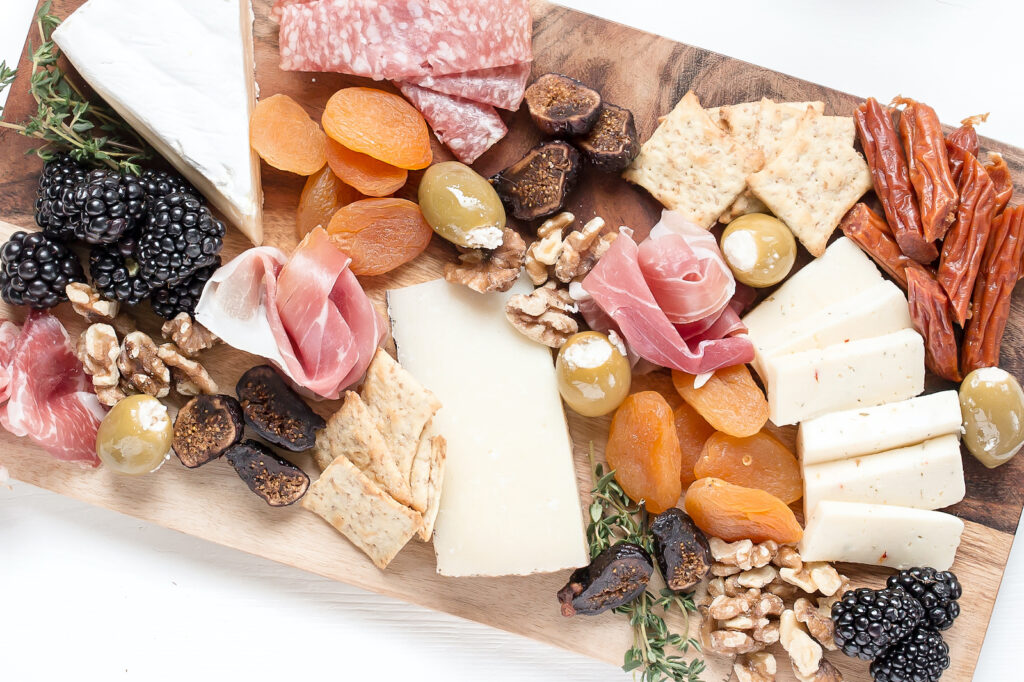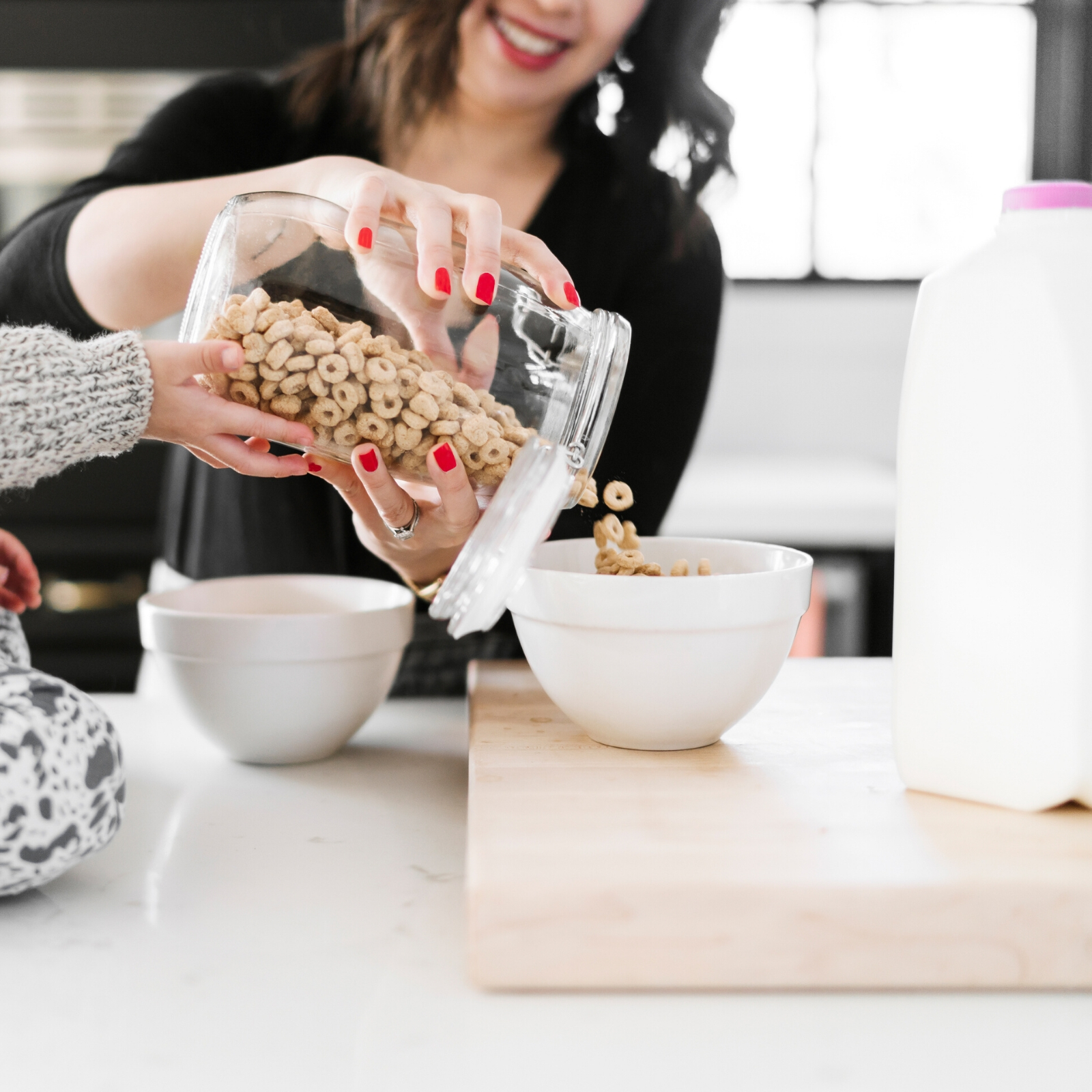Planning for Thanksgiving: 9 Keys to Enjoying the Day with Your Family
Planning for Thanksgiving ahead of time by making a menu and planning out the day is the best way to enjoy the holiday with your family!
I’ve been cooking holiday dinners for many years. Many, many years and many, many holidays.
Our very first holiday meal was a Thanksgiving dinner for two, served on top of a cardboard box “table” with a bath towel as a tablecloth. We used a disposable foil pan for roasting the turkey, cooked the potatoes in our only pot, and made a salad in our plastic popcorn bowl. It was a pitiful sight, but we were happy.
Over the years, we’ve graduated to a real table, expanded our menu, added more people, and piled on more stress.

Sometimes our house is full to overflowing with guests…and other times it’s just our own little family.
Sometimes we make the table and decorations all fancy…and other times we keep it simple.
Sometimes I cry…and other times I don’t.
Because can we all just admit that fixing Thanksgiving dinner (or any holiday meal, for that matter) can be stressful!?
Whether it’s for twenty-four, or fourteen, or your family of four, there’s just something about cooking a hunk of meat that weighs more than your youngest child that makes it all seem like a very big deal.
The people, the expectations, the inevitable flops, the cluttered countertops, the heat of the kitchen, and the sheer amount of food can cause anyone to have an emotional meltdown. Admittedly, I don’t tend to feel very “thankful” when I’m standing in the middle of a destroyed kitchen while a zillion people (or even just five) are waiting to eat a meal that I can’t seem to pull together.
If you’ve ever made a big holiday feast, you know exactly what I’m talking about. If you’ve never had the pleasure, you’re probably lifting your hands in thankfulness for dodging the bullet. And if you’re getting ready to cook a big ‘ol meal someday soon, you might be starting to hyperventilate.
Well, grab a paper bag, take a few deep breaths, and listen up because it’s all going to be okay. Over several years (and way too many tears), I’ve learned a whole lot of lessons about planning for Thanksgiving dinner and still enjoying the day. It really is possible to make a holiday meal without losing your mind or crying your eyes out. I promise.

Planning for Thanksgiving Day:
Expect to serve.
I’m just going to go ahead and say it: You are going to work most of the day while the rest of the family plays. If you go into the day expecting to work hard and being thankful for the chance to shower your family with love and lots of food, you won’t be as likely to drown in a pool of tears and self-pity.
Allow guests to contribute.
It can be hard accepting help when you need it, but when one of your guests asks what they can bring, tell them! Even if you really want to make the main parts of the meal yourself, it will help defray the cost and give you one less thing to worry about if you let your guests bring things like rolls, dessert, drinks, ice, disposable cups, or nuts and cut veggies for snacking.
Plan for snacks and other meals for the day.
Kids will still want to eat something for breakfast or lunch, even if they’ll be eating a feast two hours later. They’ll also have the audacity to want an evening meal while the adults are still trying to sit down without popping a button. Pick up things like nuts, chips, raw veggies, cheese and crackers, and sandwich fixings for easy eating throughout the day and evening.
Get Your free
Holiday Quick-Clean Cheatsheet
For a no-fuss holiday-ready home!
Your email is safe with us. We wouldn’t dream of sharing it with anyone else.
Serve the big meal in the afternoon or evening.
It can be very helpful to push your mealtime to later in the day, rather than aiming for a traditional lunchtime. It buys you some extra time to get everything finished up, and it doesn’t force you to set your alarm for two hours before sunrise just to get the food started.
Do not try too many new recipes.
Although it’s tempting to show off your cooking skills by making some fancy new recipes, just resist. Please, please resist. It’s never a good idea to experiment in the kitchen when you’re already making thirteen different dishes and you have a house full of people who are starving half to death. (Ask me how I know.)
Prep the day or week before.
Cut veggies, bake bread, and make pies the day before the meal. You will be thankful for having a few less things to do. Plus, some tasks (like making pies) always seem to take twice as long as you expect, and putting it off until the day of the meal gives you very little margin for error.
Plan out serving dishes and serving spoons.
The day before the big meal (earlier if you think you’ll need to borrow things), set out all your serving dishes and mark what will go in each one with a sticky note. This is so helpful when lots of hands are in the kitchen and trying to help dish up all the food at the last minute.
Make a menu plan for the rest of the week.
If you’ve spent one entire day cooking, you most likely won’t feel like doing the same thing the very next day. Make a meal plan that uses up leftovers and includes other simple meals to serve for a couple of days until the shock and exhaustion wear off.
Make a detailed time schedule for the day.
This has been a game-changer for me. Making a time schedule for the entire day that includes prep work, cooking times, periodic clean-up, and even family necessities will keep the day flowing smoothly, help you remember all the details, and ensure that everything gets done and to the table.
I show you the entire step-by-step process I use for making a time schedule for the big day in my Simple Holiday Home Action Kit! I even include printable timetables, grocery list templates, menu planning pages, plus more! You can see all the fun details RIGHT HERE!
Making a big meal, especially on a holiday, is a unique opportunity that you have to show love to your friends and family and to create special traditions and memories. Embrace it and enjoy it!
Get Your free
Holiday Quick-Clean Cheatsheet
For a no-fuss holiday-ready home!
Your email is safe with us. We wouldn’t dream of sharing it with anyone else.









Hi Amy,
I love your newsletters. This one was ‘right on’ for me. You could have been my ‘ghost-writer’, seriously, on this topic! The stress, tears, and hot kitchen are all at the top! So many times my wonderful husband has said to me, “Go sit down and I will take care of it”. I then, walk away to cool off, usually outdoors, and to calm down while others carry on with the madness. Ha, ha! Only in the moment it is not funny!
Another stressor is the kids running in and out of the kitchen – “I’m hungry” – “When can we eat? – “Can I help?” Yikes! So, a few years back, our local daughters said, “Mom, we will come early and help dad in the kitchen and you can stay in the family room doing crafts or something with the grandkids”. Well, now . . . that sounds like a Plan!! And, I liked it!
Before Thanksgiving day I had searched for, and printed coloring pages of turkeys, pilgrims, pumpkin pies, and autumn leaves, etc. for us all to color with colored pencils. We gathered around the child table that was mine as a very young girl and did these things. I found kids’ games and made up Thanksgiving Bingo for them, and we had prizes.; (this was an after-dinner event). They loved that. I have wonderful holiday sticker pages, and construction paper to create their own Thanksgiving page. I also bought the paper, coloring Thanksgiving-printed tablecloth to entertain them with. We did ‘hand’ turkey drawings; things like children do in their daycare or classroom. It was the most fun for me preparing these, but all three of them aged 6 and younger were thrilled with doing this with Grammy! It was a success, and our daughters were happy too!
This worked for having the younger children, but I’m sure we could play some board games before dinner when they are older, while the calmer cooks take over, ha! I am so blessed and fortunate to have this opportunity and time with the kids.
Just wanted to say that, planning ahead, setting and decorating my table two days ahead is a must, (even if it’s a buffet – set places, napkins, utensils and place cards to calm the seating confusion), making pies the day before, and of course, as you say, clean up along the way! My hubby is the very best at doing that without being told. It creates a calmer environment, and also more counter space. Mom and I have always picked our serving bowls, platters, and utensils for serving beforehand, and added post-it notes to every item. Then your helpers have a clue.
Again, I loved this message, and especially what you titled it! Ha, ha! That was so right for me.
May all your future family gatherings be blessed with healthy guests, stress-reduced times for all, and happiness, Terry
Thank you Amy,
I am going to add your suggestions to my planning this year! I had never thought to put out serving dishes with sticky notes of what each will have in them! Brilliant! I ‘am always searching at the last minute.
For me, I save time and stress by roasting the turkey the day before. Cut it up, separate dark and light meat in different plates, and pour some broth over the turkey to keep it moist. Then just reheat it in the oven Thanksgiving Day. This saves so much time and mess on Thanksgiving Day. You still get the delicious aroma of the turkey. Our family has never been the type that carves the turkey at the Thanksgiving table so it works for us.
I hope you and you family have a blessed and memorable holiday. Thank you for all the very helpful work that you do while keeping things very light and keeps me laughing.